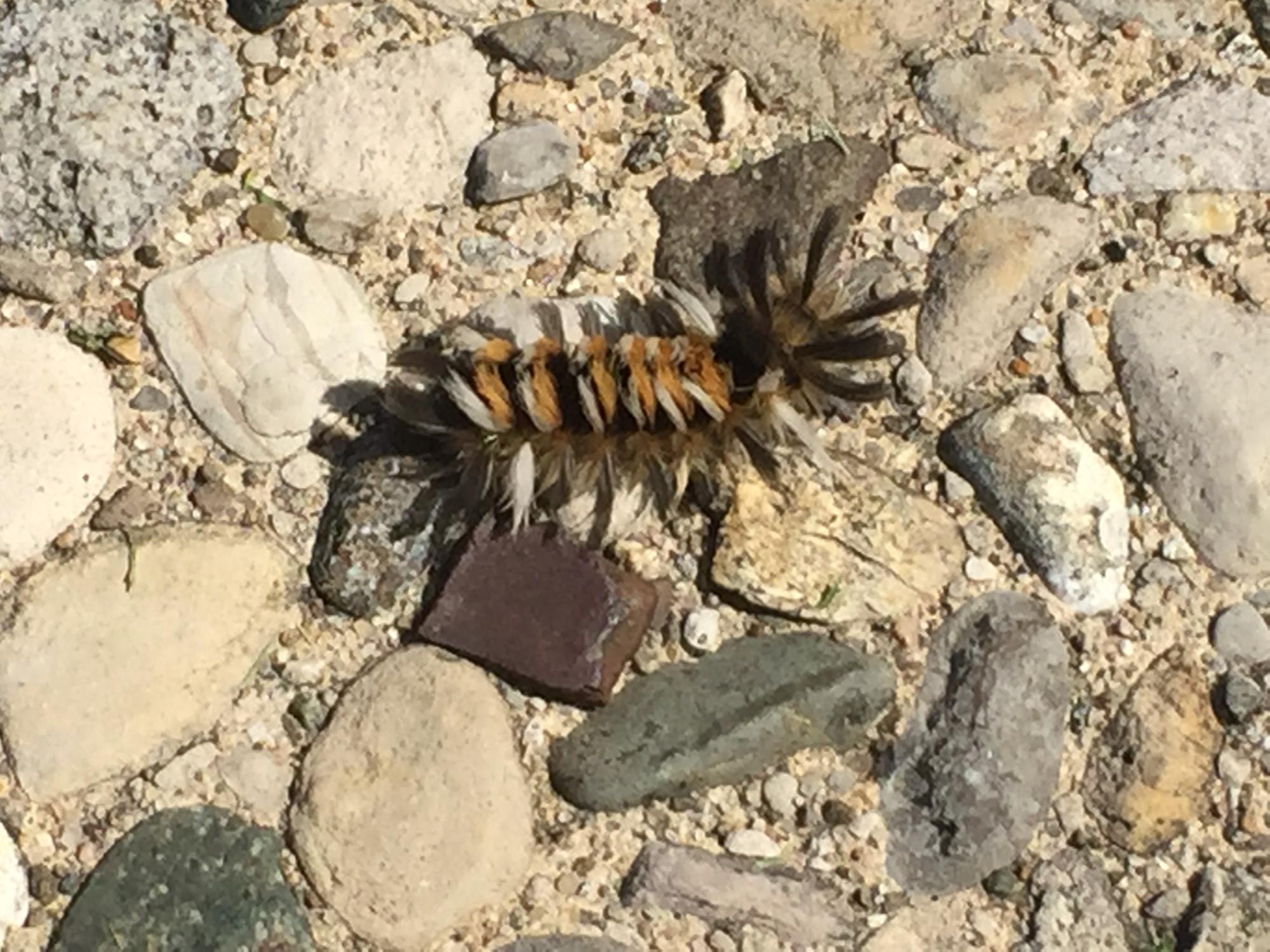TUSSOCK MOTH caterpillars
White-marked Tussock. This is another common tussock moth caterpillar with a distinctive appearance, although the adult moth is rather plain.
Hickory Tussock caterpillar. These white and black caterpillars are a common sight in autumn woods ... but don't touch! They can cause a painful rash, and in some cases, a severe allergic reaction. (In fact, it is a good idea not to touch any caterpillar unless you know for sure that it is not a "stinging" variety.)
Milkweed Tussock. This caterpillar has an eye-catching assortment of brown, white, and black tufts. The adult moths are actually rather plain. These wild-looking caterpillars turn into fairly non-descript gray moths.
A pair of White-marked Tussock caterpillars in different sizes, feeding side by side.

This is a Definite Tussock caterpillar. It is very similar to the closely-related White-marked Tussock (above), but Definite Tussock caterpillars are almost entirely yellow.
Three Milkweed Tussock caterpillars feeding together on a milkweed leaf, at Spring Valley Wildlife Area. Some caterpillars (particularly earlier instars) feed together gregariously. The combined effect of many warningly-colored caterpillars serves as a deterrent to predators.
Banded Tussock moth. A very common caterpillar, notable for the black and white tufts at the front and rear of its body.
This is as Sycamore Tussock moth. Sycamore and Banded Tussock moths belong to the genus Halysidota. The adult moths are identical and can only be identified by dissection. However, the caterpillars are easy to tell apart. This Sycamore Tussock cat has a red head and red and white tufts (unlike the black head and black tufts in the Banded Tussock above).